Leaving Waiheke Island for the Coromandel, we had sun but no wind so we motored across the Hauraki Gulf.
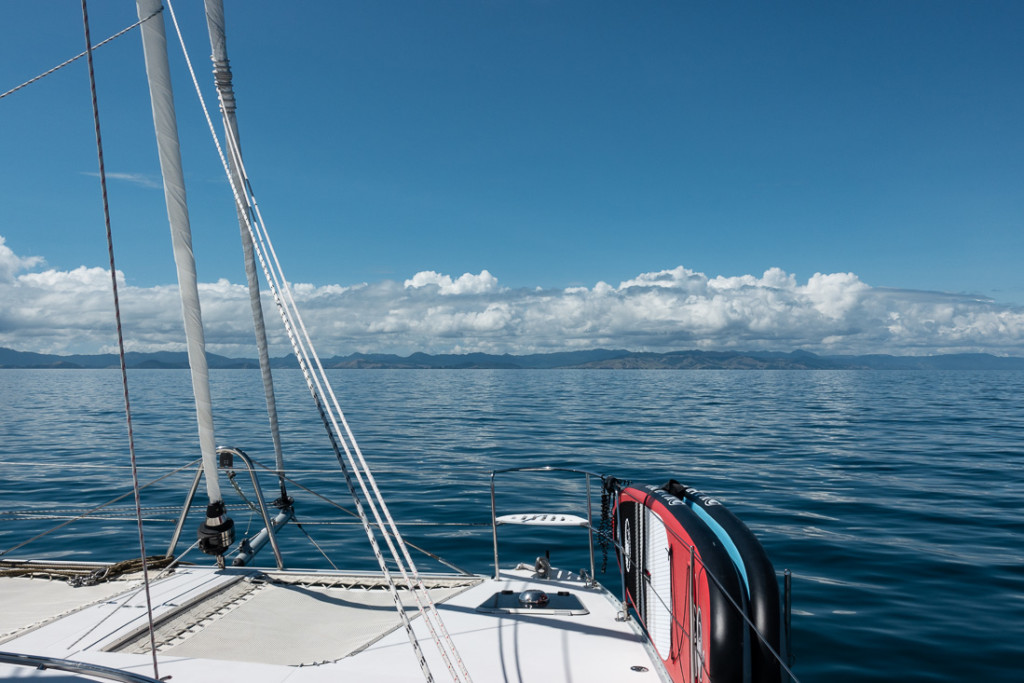
We anchored in Te Kouma Harbour, just south of Coromandel Bay. The surrounding hills appeared to be cow pasture though we also saw some geese. Weather wasn’t great so we didn’t bother to go exploring. It had been a hot, dry summer but the grass turned green overnight after that “fat rain”.
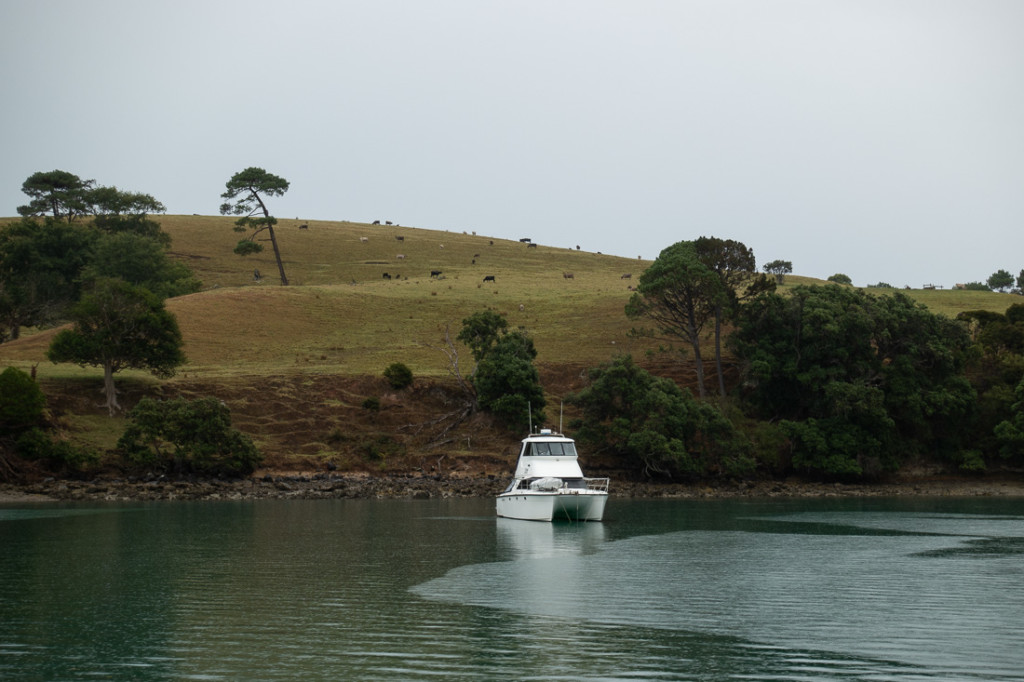
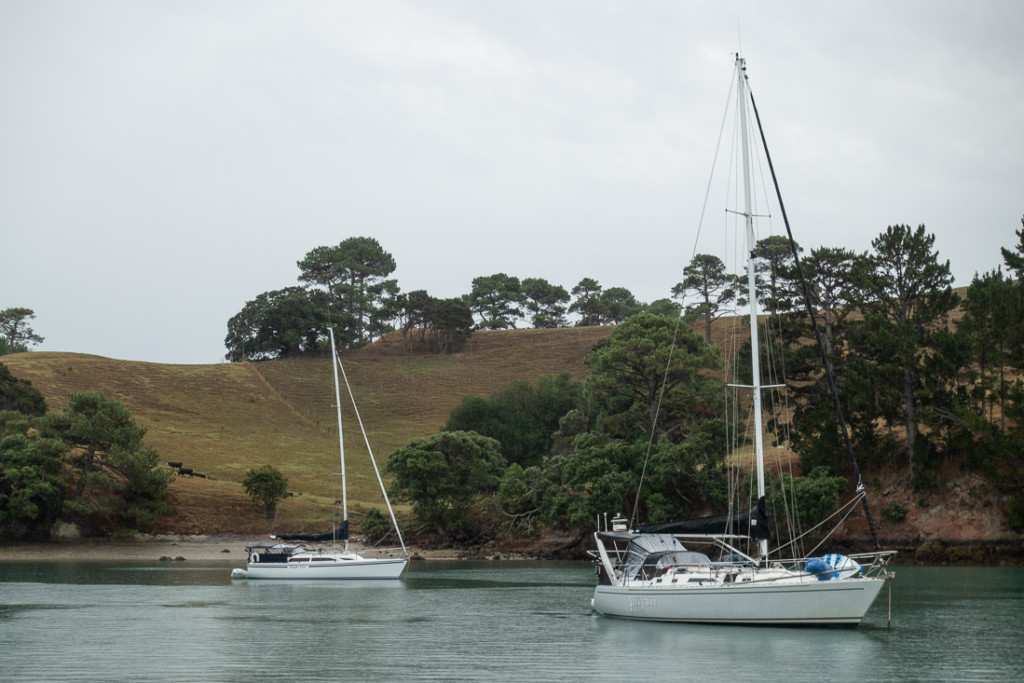
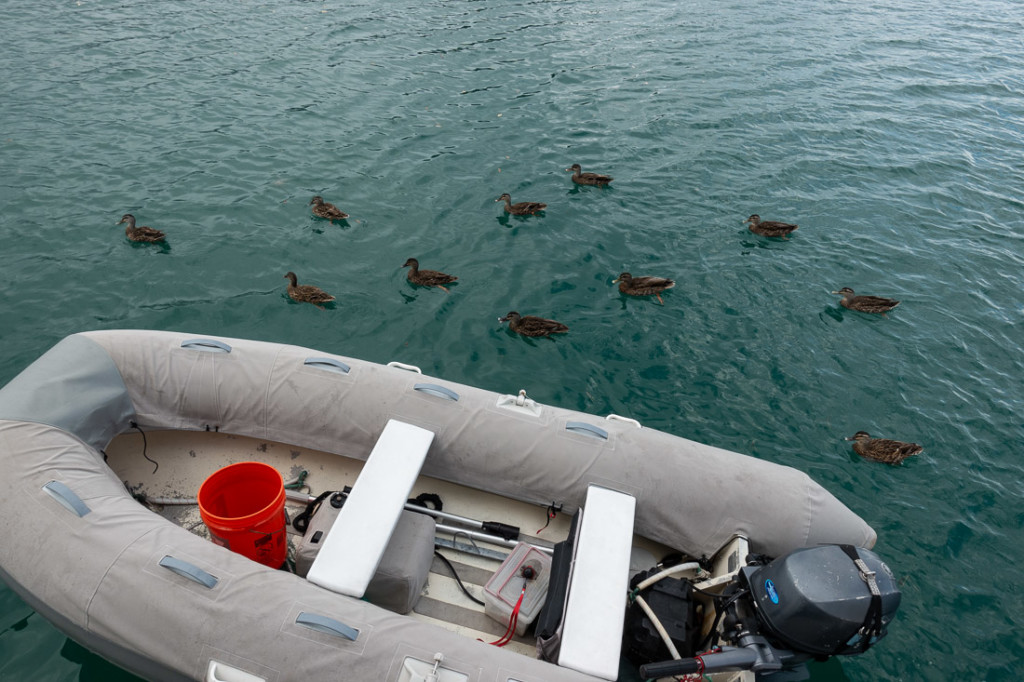
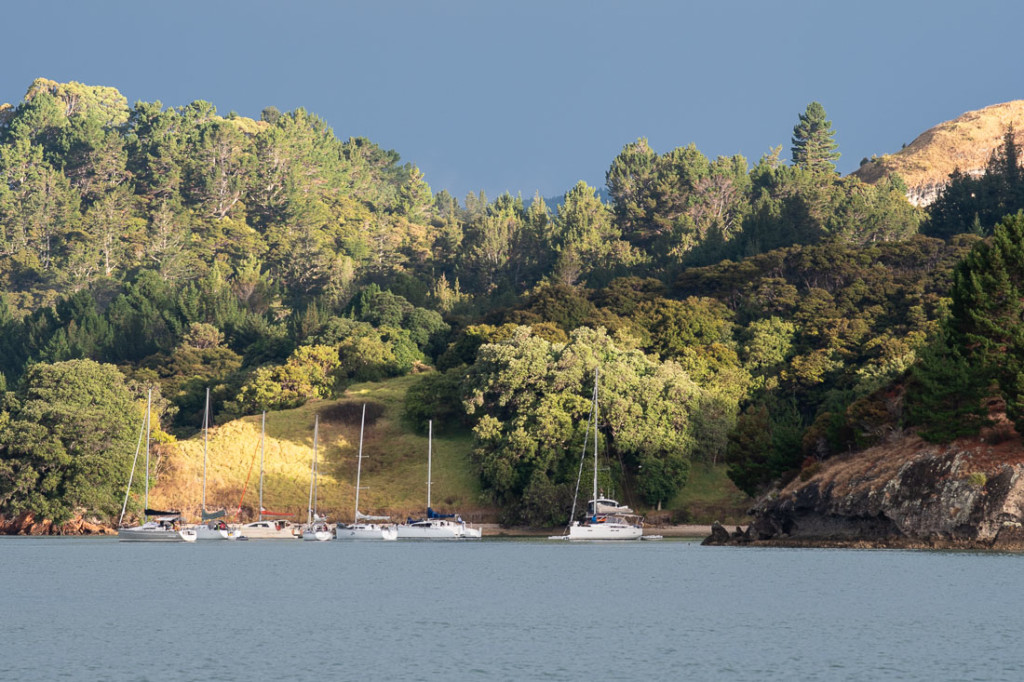
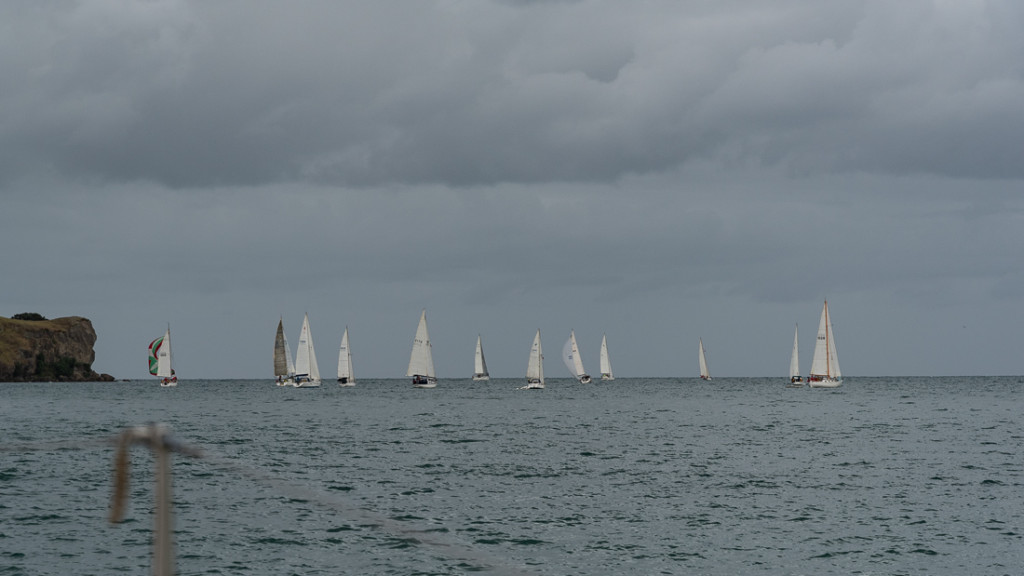
We moved around to Coromandel Bay so that we could check out the town and do some laundry. Great to find a laundromat open on a Sunday!
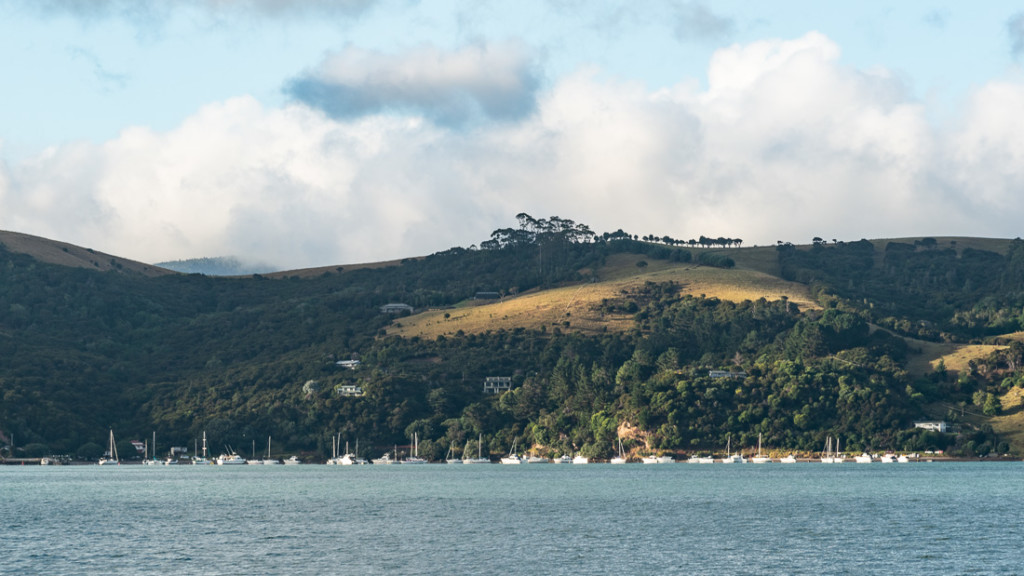
The Coromandel is known for their oysters and green lipped mussels and huge farms dominate many bays and shorelines. It is a big industry here. One string can be worth $80,000!
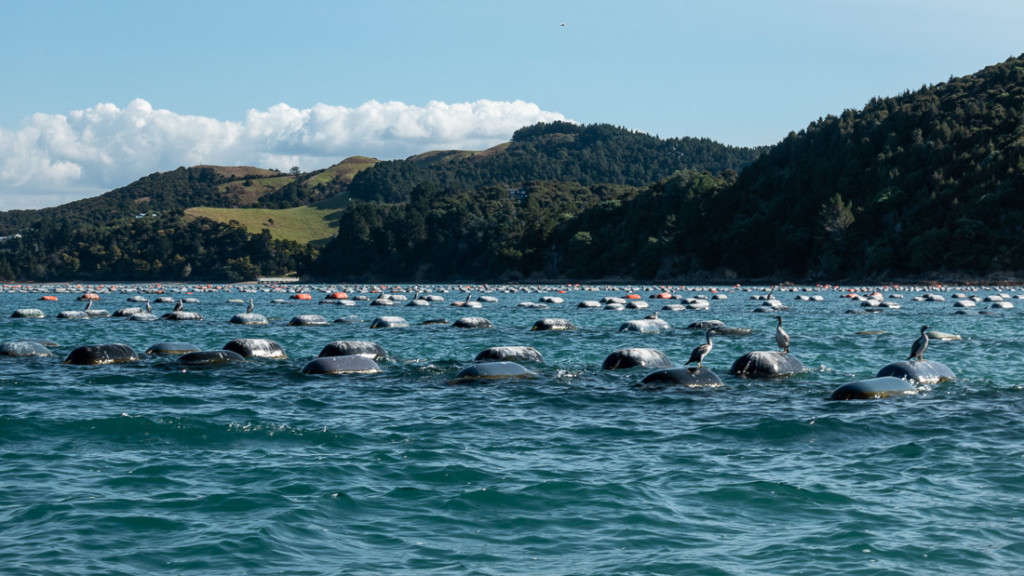
We dinghied into Coromandel Town with several bags of laundry. As luck would have it, we arrived as the tide was going out. It would be several hours before we could leave again as the little creek dries. While our laundry was processed, we hung out in a cute cafe/restaurant called Umu. A torrential rain and wind storm blew through town while we waited for the tide to come back in. The cafe had free wifi so we spent time on the internet. Monty went out to check our dinghy several times and see if there was enough water to make it back to Whistler. It was getting close to dinner time so we decided to change venues, opting for a pub in the Admirals Arms Hotel. The hotel had been around since the gold rush days of 1872. A fishing derby (for women only) was having its wrap-up awards and dinner in the pub. Lots of the gals were in costume.
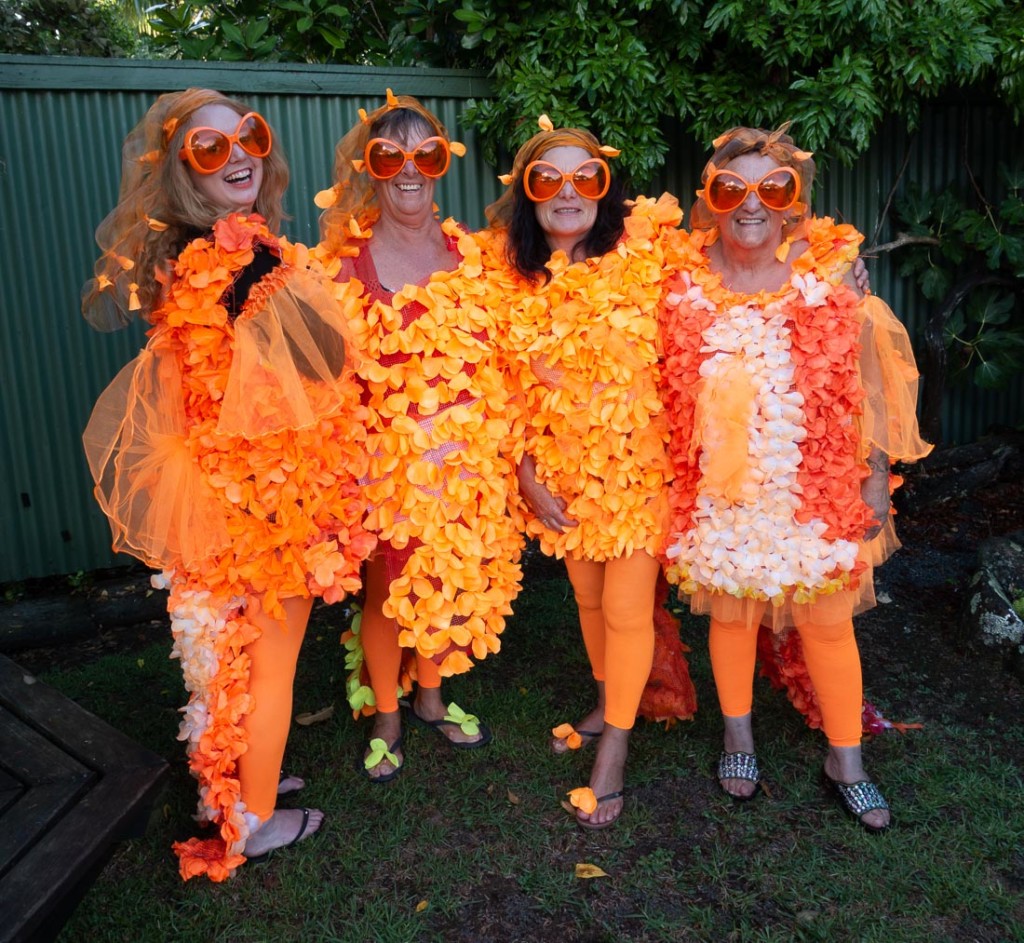
It was busy night but the service and food were pretty good. We visited with a NZ couple who were also waiting for the tide to rise so they could get their dinghy refloated. As the sun set, Monty was able to drag the dinghy down a muddy slope into the creek. We loaded our laundry back in the dinghy and putted out to the boat. Too bad the weather had been inclement as I would have liked to have explored and taken more photos of this old town. We needed more time to explore the many bays and beaches on the Coromandel.
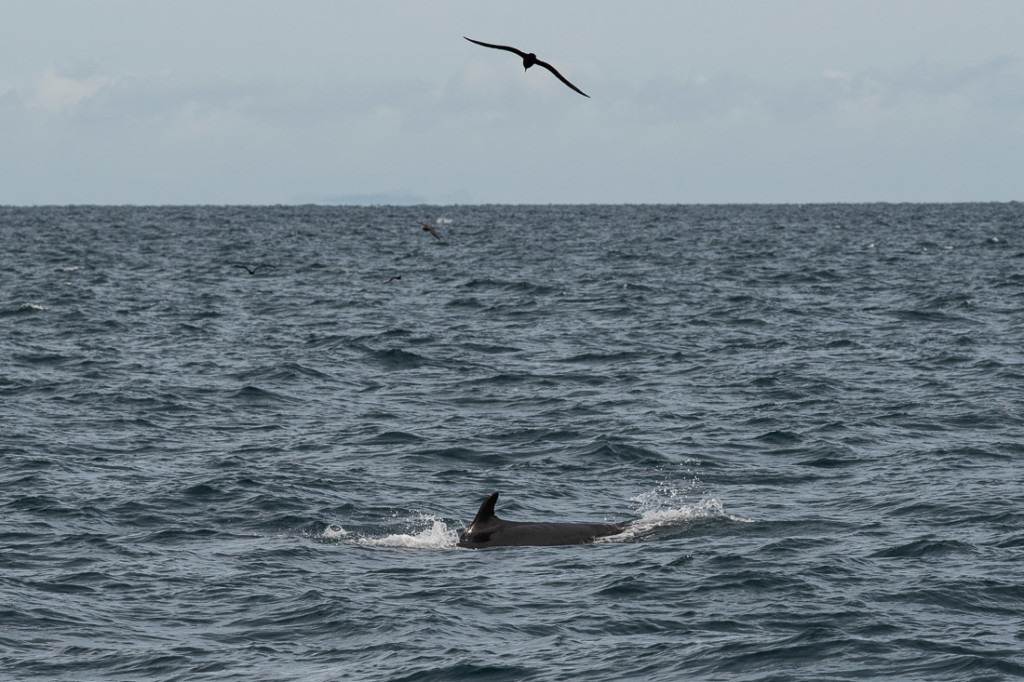
Port Fitzroy Harbour is a large protected bay. Smokehouse Bay is a popular anchorage in the Harbour. Fortunately, it wasn’t the “Silly Season” (around Christmas time when the kids are off school) when it can be difficult to find a spot to anchor.
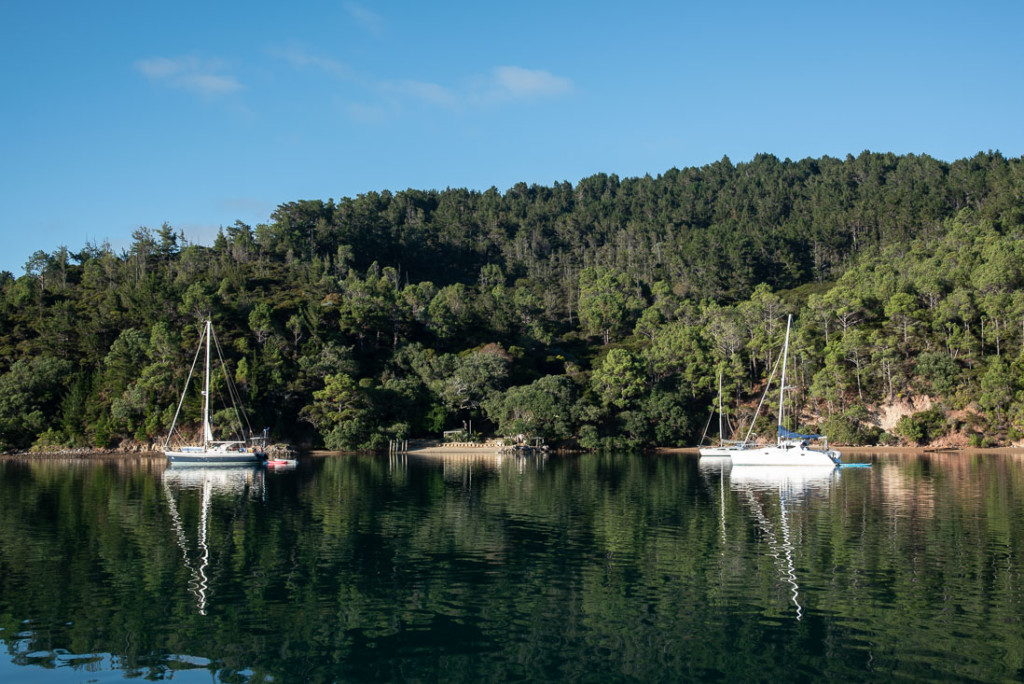
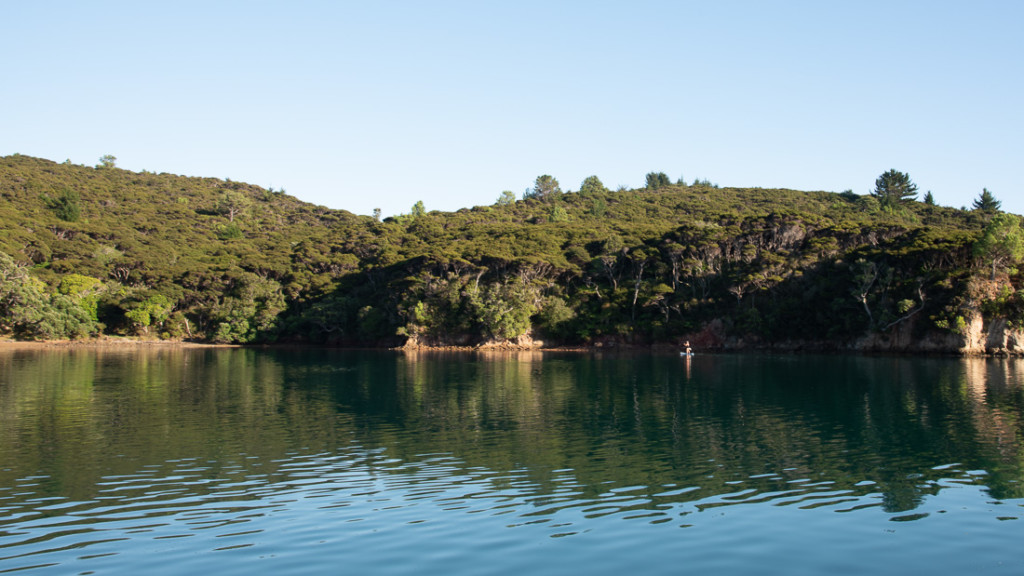
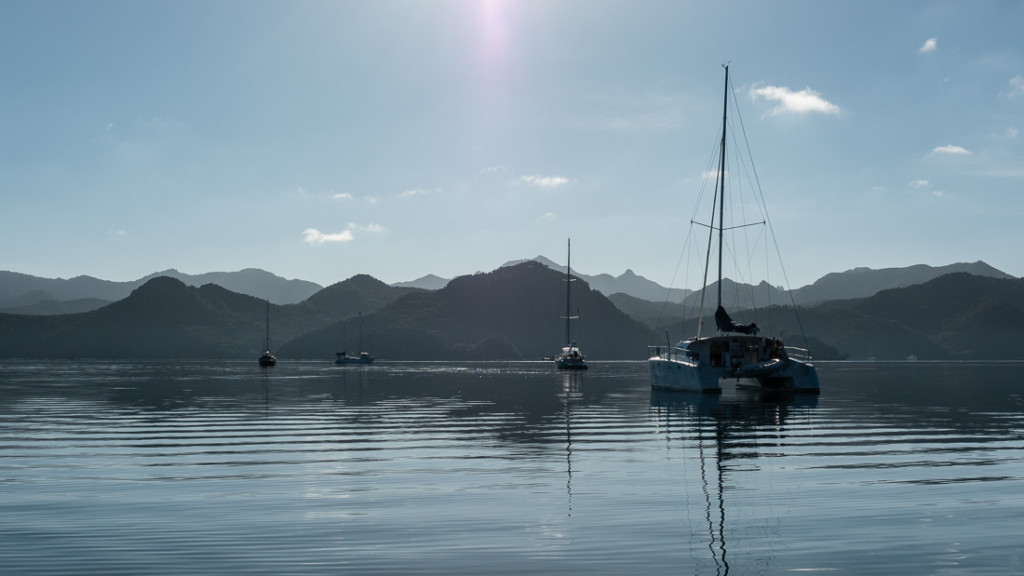
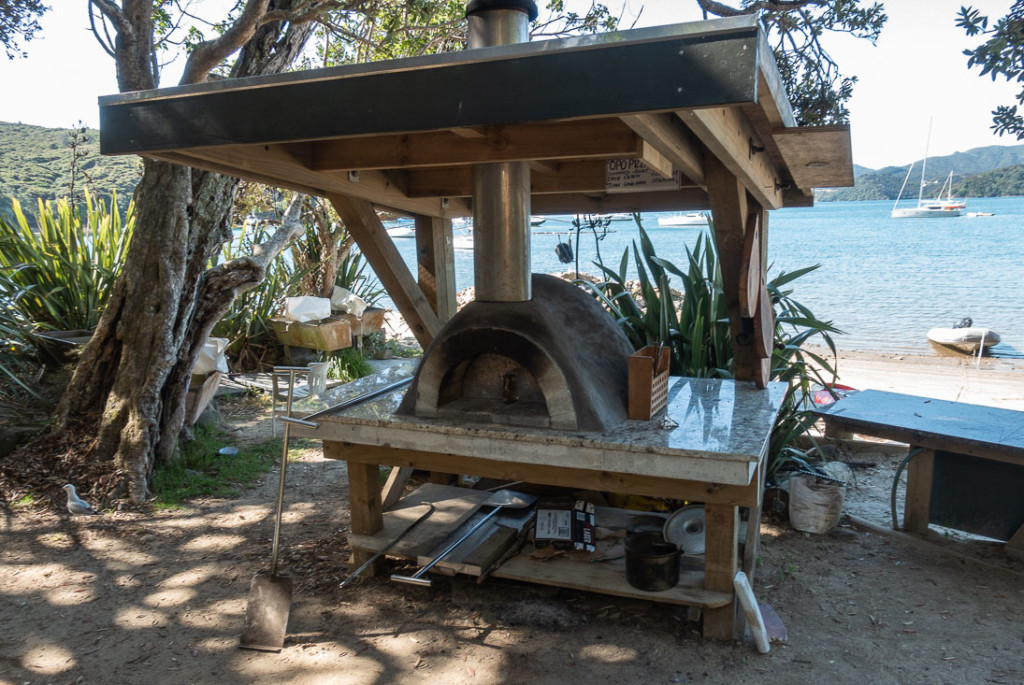

The bay also had a fish cleaning area, barbecue, a few washing machines with an old fashioned ringers, clothes lines, swings, an outhouse and picnic tables. On one night close to 10 dinghies were gathered onshore.
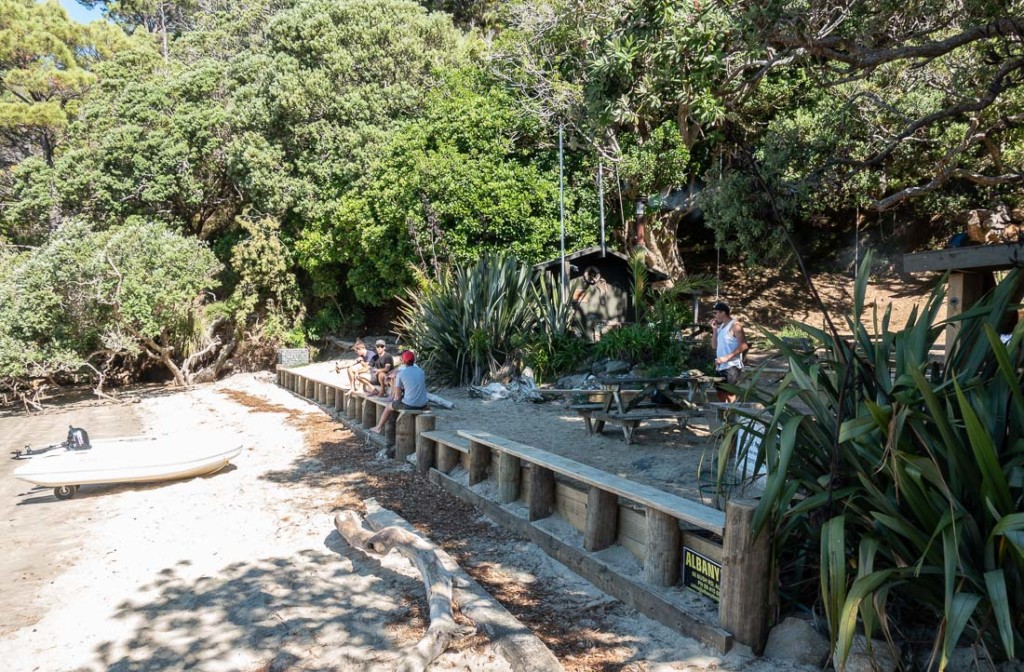
On a calm morning, we paddle-boarded up the bay, noting Barrier Gold Farm with some cows on the western side. We were told the farmer sold manuka bush honey. We would have to return with some cash!
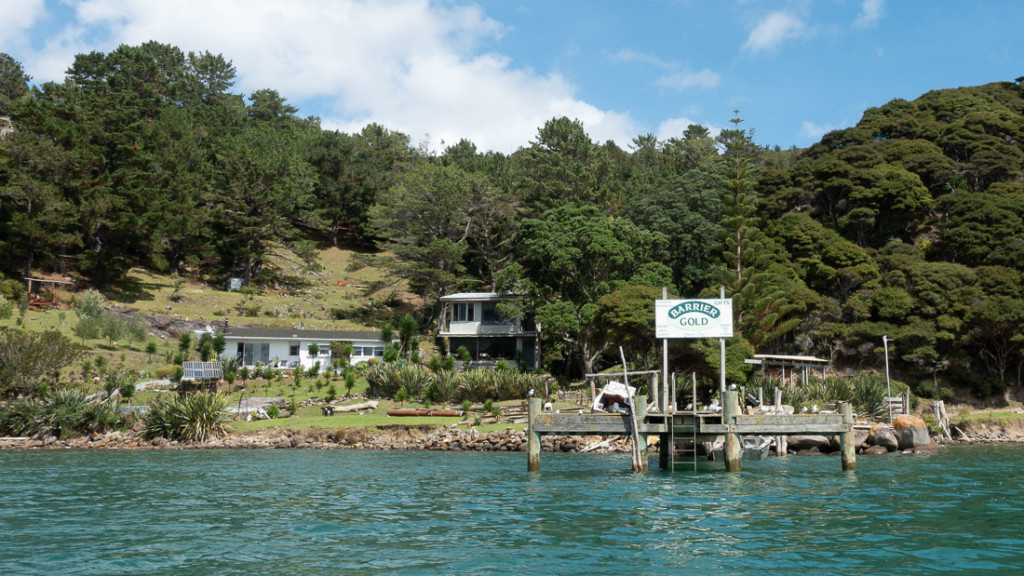
Much of the land above the little bay was hilly and covered in thick bush. We were told there were some trails to hike, so we went for a walk. Monty and I got separated taking different tracks at the start. The track met a recently bulldozed road which had a few twists and turns and Y’s where you could go one way or another. I followed the road that lead up, trying to get to the top so I could get a view for a photo. After a reasonably good walk in the late afternoon sun, I was rewarded.
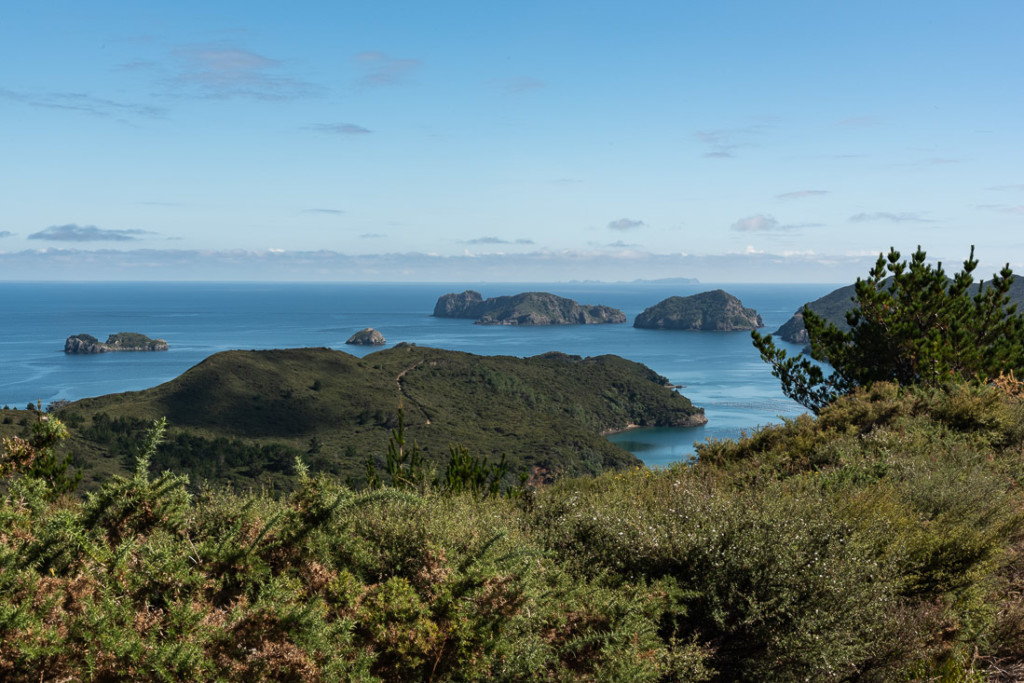
On the way back down, I had a hard time following the track from the road back to the beach. The sun was dropping. Monty finally came looking for me and we met on the correct track not far from the beach. It was a nice hike but I would have preferred his company and his jokes for some entertainment along the way! At least there were no trucks kicking up dust on the road!
The next day, we visited Barrier Gold Farm to buy some honey. A pet pig checked us out as we wandered around the facilities. Sven, the Dutch farmer was a character and showed us around. He explained how he extracts the tea tree oil from the manuka and kanuka bushes.
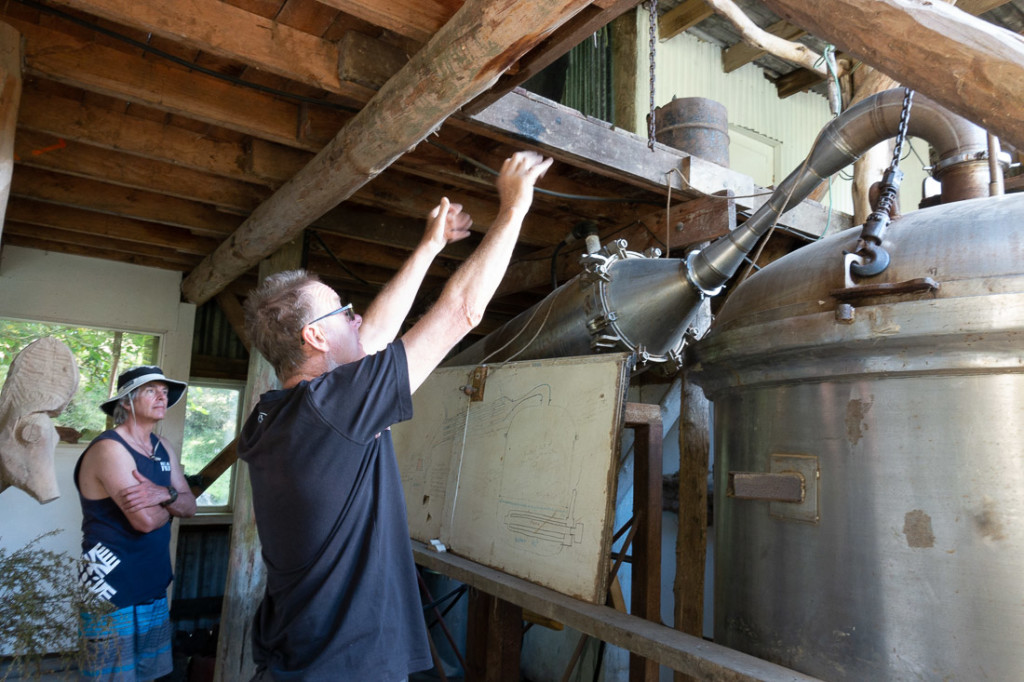
He explained he made more money from selling the oil than honey, so we succumbed and bought some oil as well. Supposed to be good for a variety of ills.
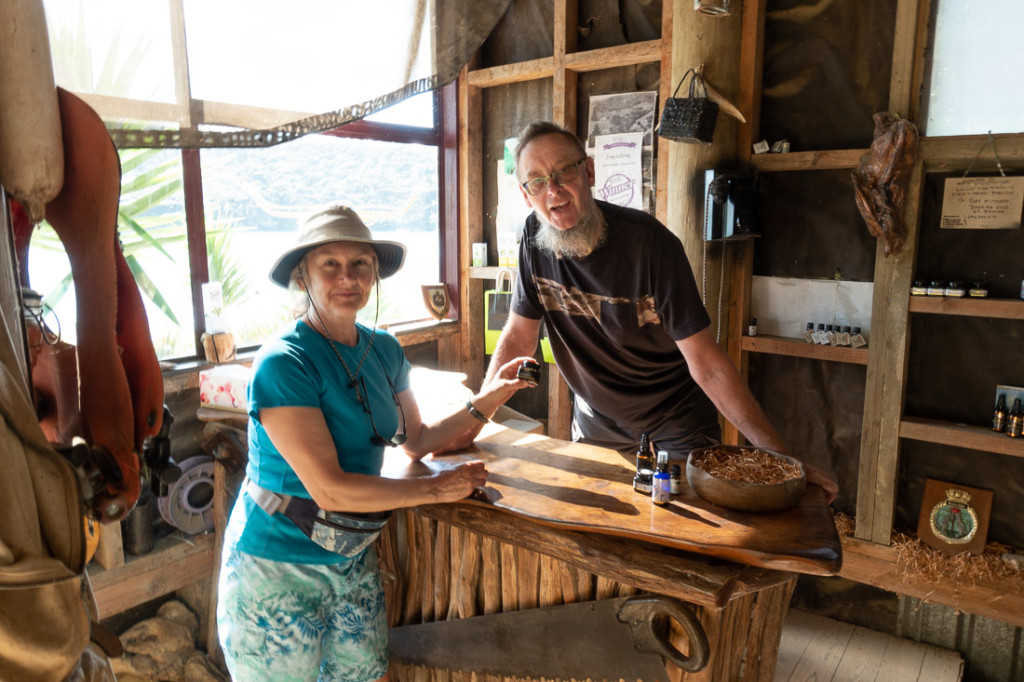
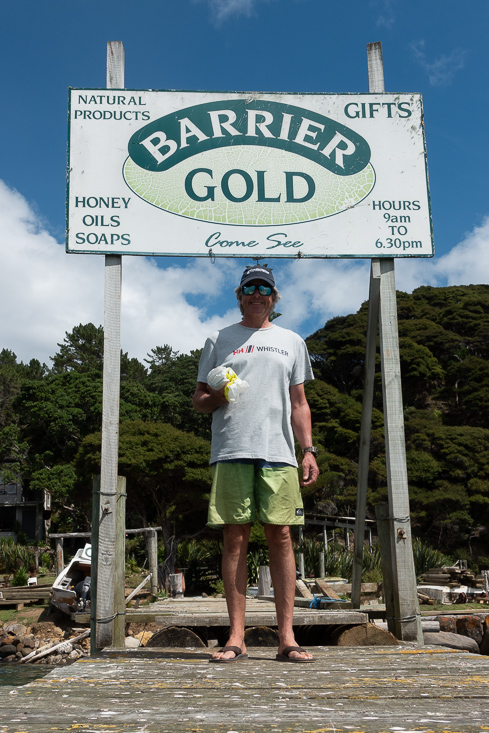
He gave us a bit of the history of the property and offered a map of the roads, pointing out the best vistas.
Great Barrier Island, also known as Aotea, is New Zealand’s fourth largest island and covers 285 sq km. It was formed by volcanoes, similar to the Coromandel Peninsula. It was named by Captain James Cook because of the calming waters of the Originally the island was covered in mature kauri forest, but from 1791 until 1942, the vast stands of kauri were logged for ships. Sporadically, copper, gold and silver mining, gum digging and whale-oil extraction industry were tried over its history. The New Zealand Department of Conservation own about 2/3rds of the land and are trying to return it to its natural state and keep it pest free.
The farmer owns a huge track of land which must be worth millions. The land had been cleared to raise sheep a long time ago. The farmer told us there was no money in sheep anymore, so he raises cattle now and the grasslands have been rapidly returning to bush. He built a network of the roads criss-crossing his property so that beehives could be set up in different sites surrounded by manuka and kanuka. He leases the sites to an apiarist.
Some prickly yellow-flowered gorse, which is not native, unfortunately also thrives, so despite the claim the honey is 100% manuka bush honey, it is likely not. We had to be wary of gorse while hiking as its thorns would snag us. The early settlers introduced a lot of nasty species, like gorse, possums, skinks, cats, dogs and rats which put a lot of pressure on the NZ native environment. It is an uphill battle, but the Department of Conservation is making some strides in isolated areas like Great Barrier Island where possums and deer have been irradicated.
The next day was sunny and warm, great for a hike. We set off (together) following the farmer’s map and instructions.
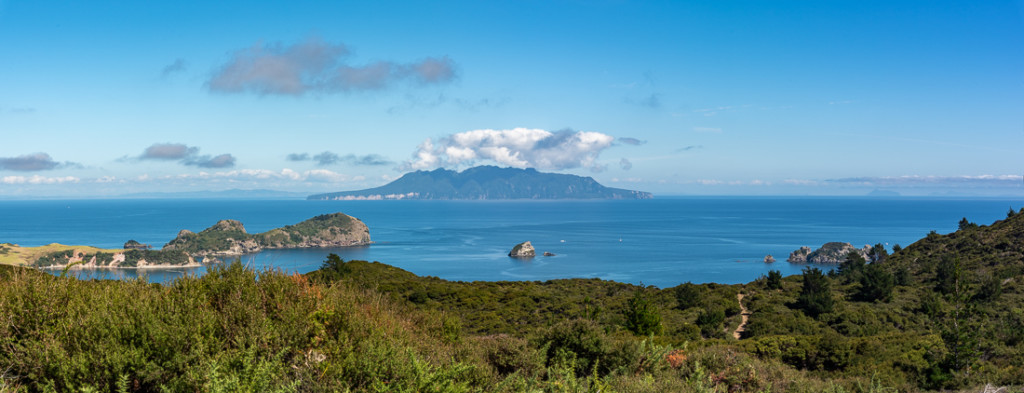

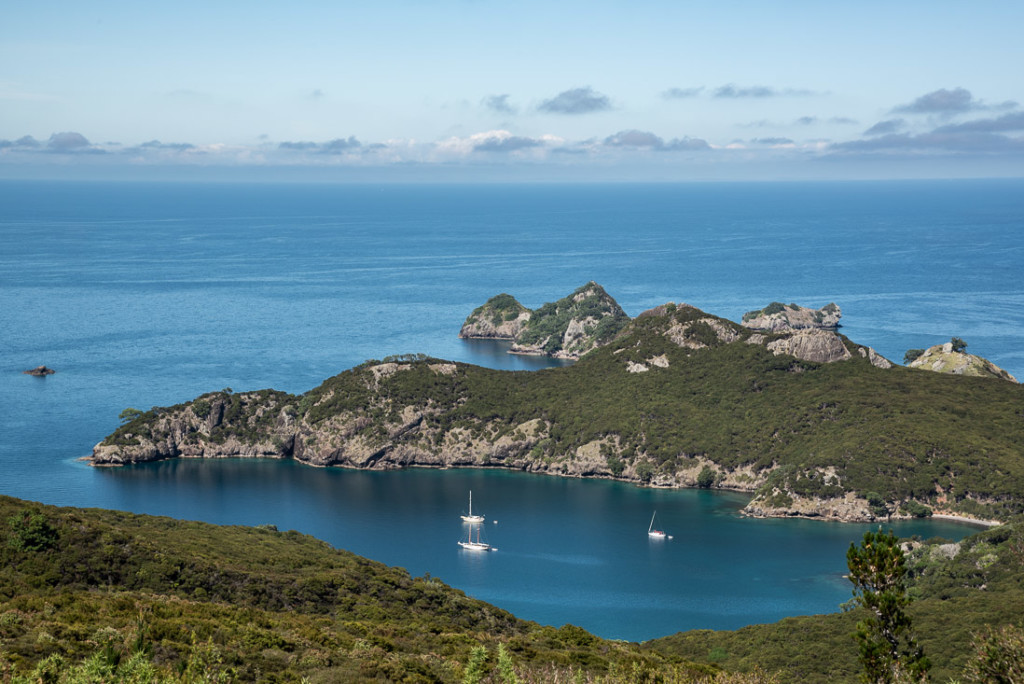
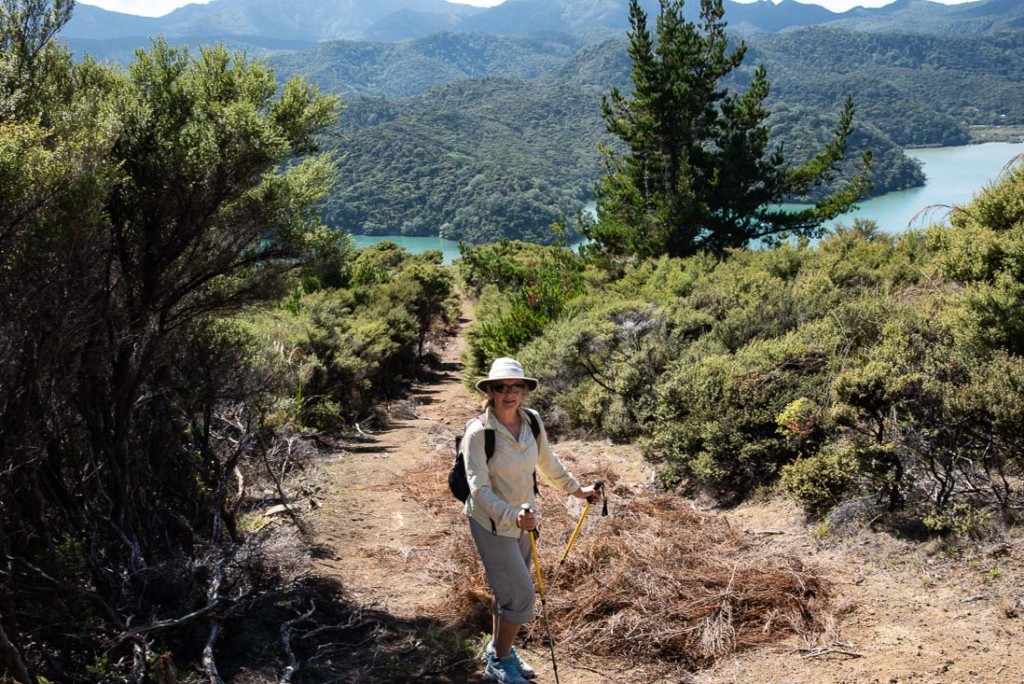

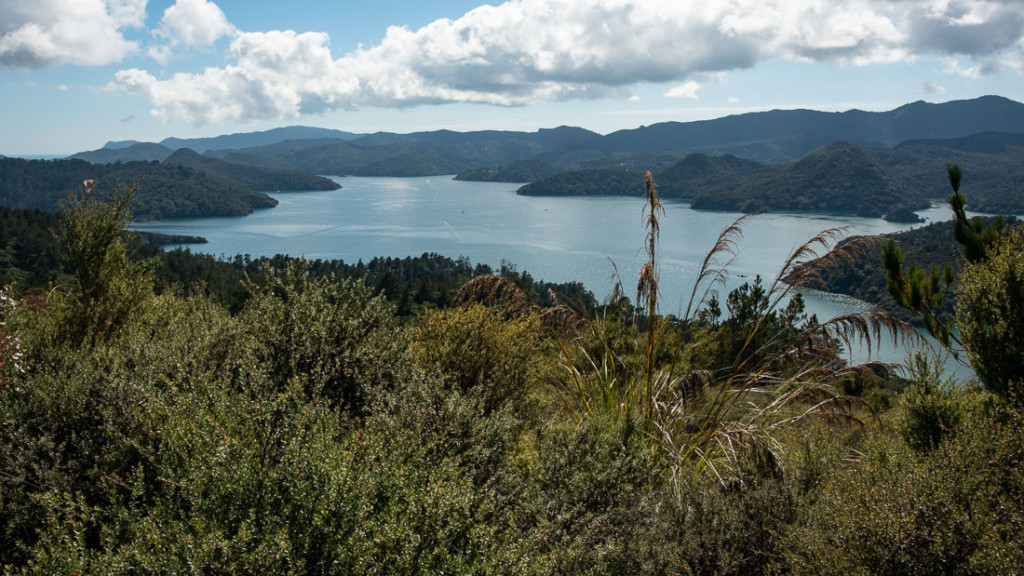
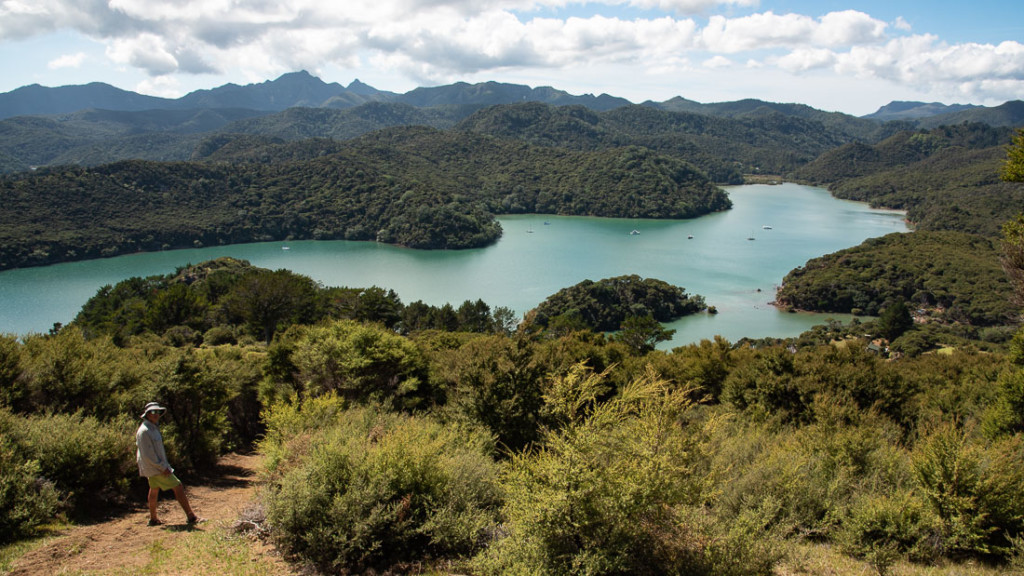
We had no internet with our provider, Spark, in Port Fitzroy. It is nice to get “offline” at times, but this wasn’t one of them. We were trying to line up insurance for the boat, which had suddenly become quite challenging, and arrange for a haul out.
We visited with a cruising couple we had met several times over the past few years. Thomas and Gaylyn were on Qi, on a German-flagged boat.
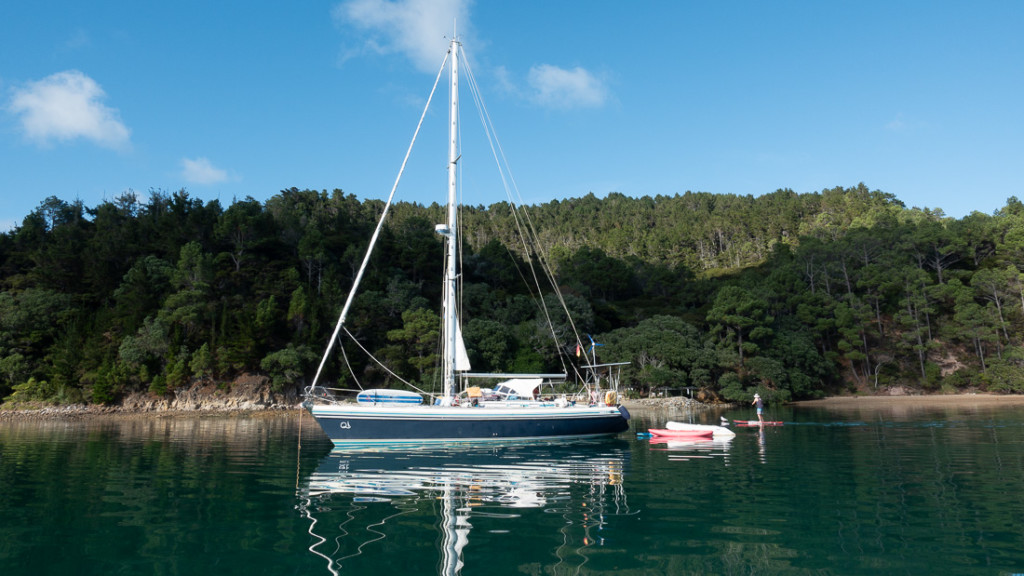
Thomas was working on some computer software project and had internet service from a different provider, Vodaphone. He offered to let us come over and download some emails. It turned out we could pick up his hotspot from our boat with our wifi booster and, with his permission, we were able to attend to some important business. We were so grateful!
One of the best attractions of Great Barrier for us was the fishing. We were keen, but certainly not skilled. Luckily, the fish were plentiful. We hooked the dinghy up to the mussel farm floats, which is apparently an accepted practice. The snapper were around and biting, but they were usually under the legal size (30cm). We heard later that the snapper had recently spawned which meant there were a lot of hungry juveniles in the waters. They were tough little guys and quickly swam away once released. You have to be careful as their spiny fins can prick you.
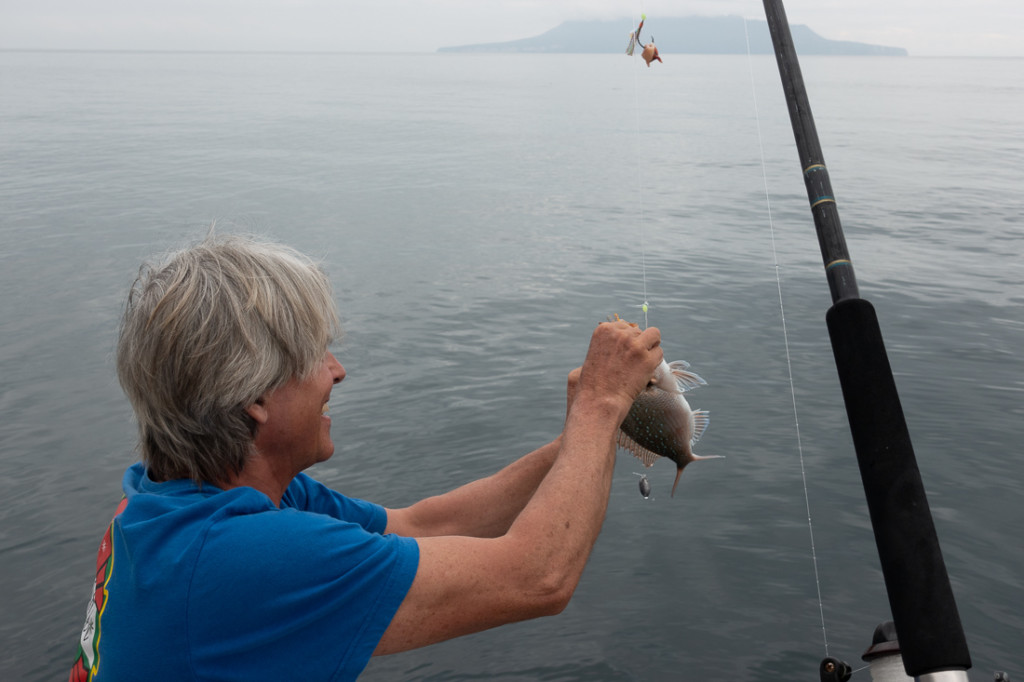
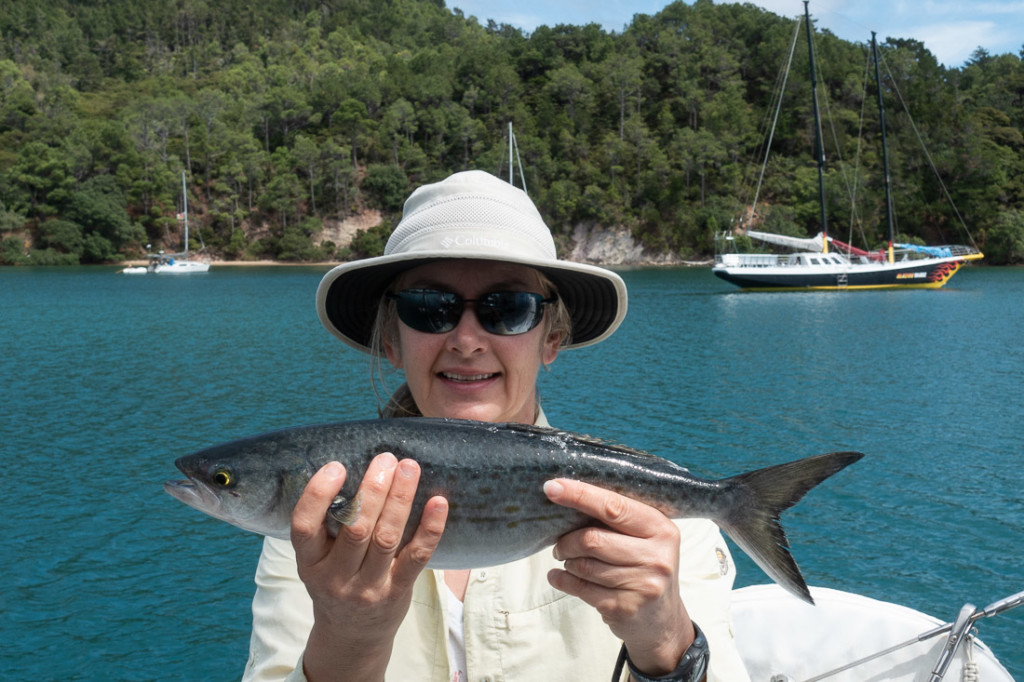
We made a run into Port Fitzroy for some bait. The town was really small and quiet. The nearby anchorage was buggy (wasps) so we decided to return to Smokehouse Bay, just a couple miles away.
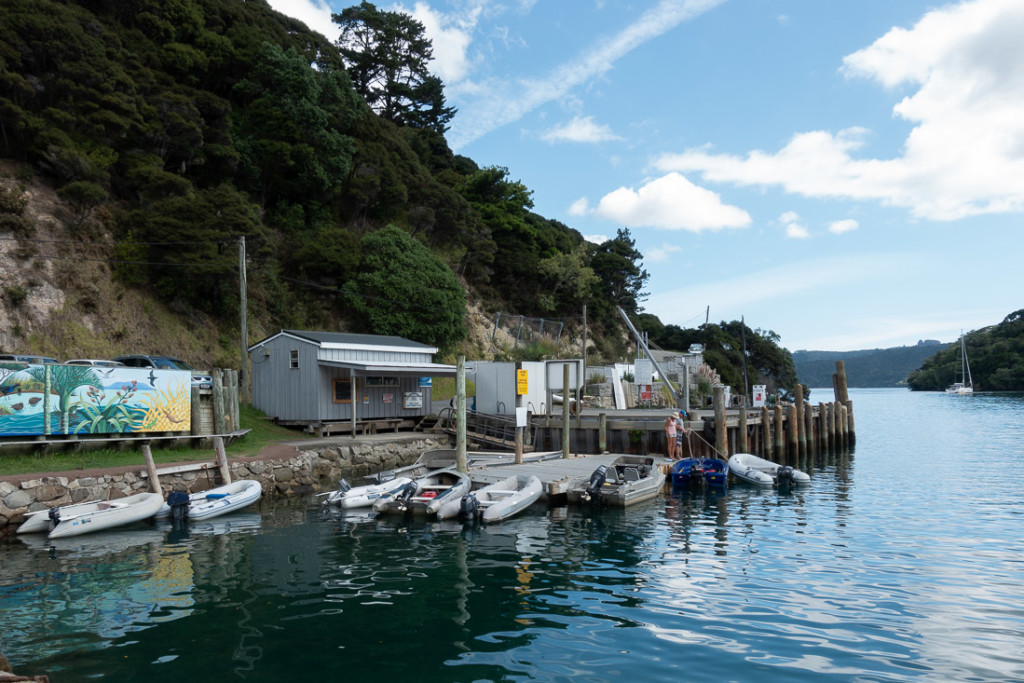
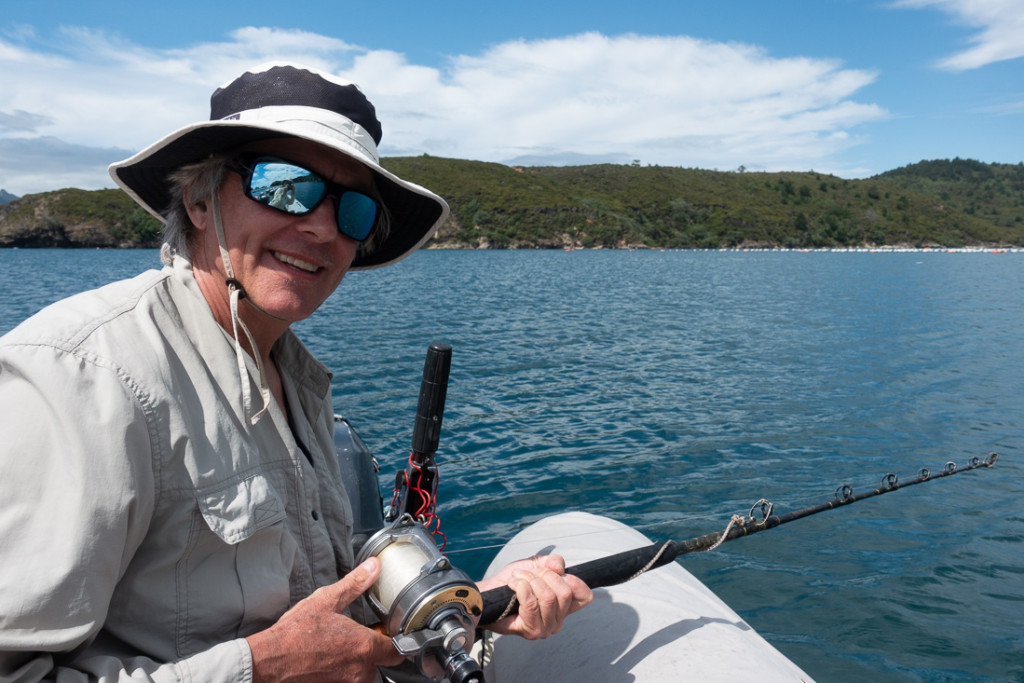
We finally had some success!
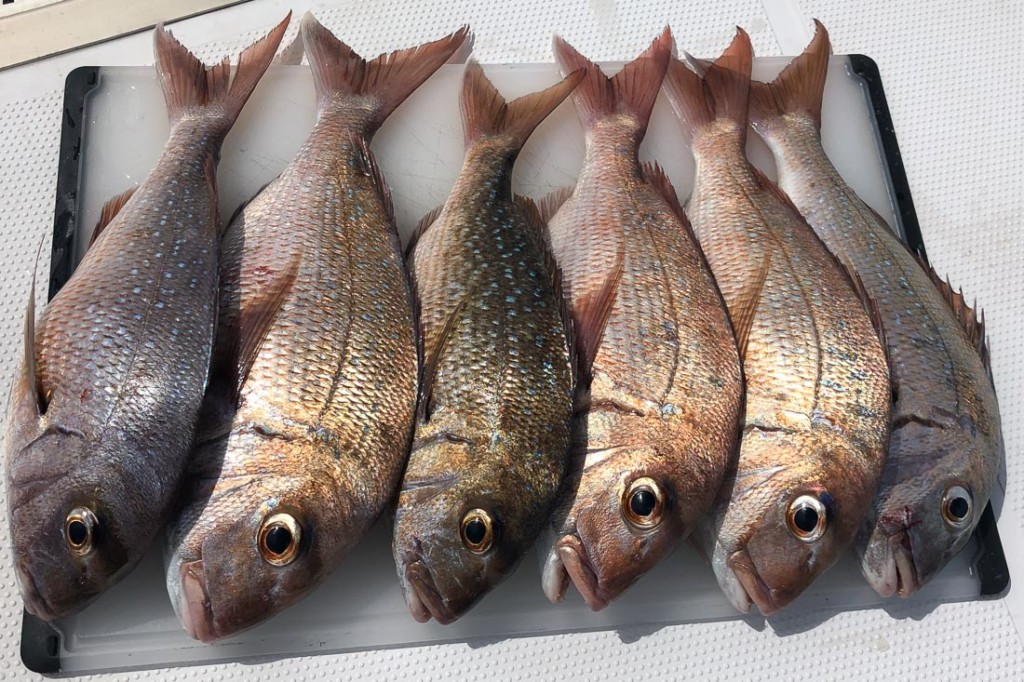
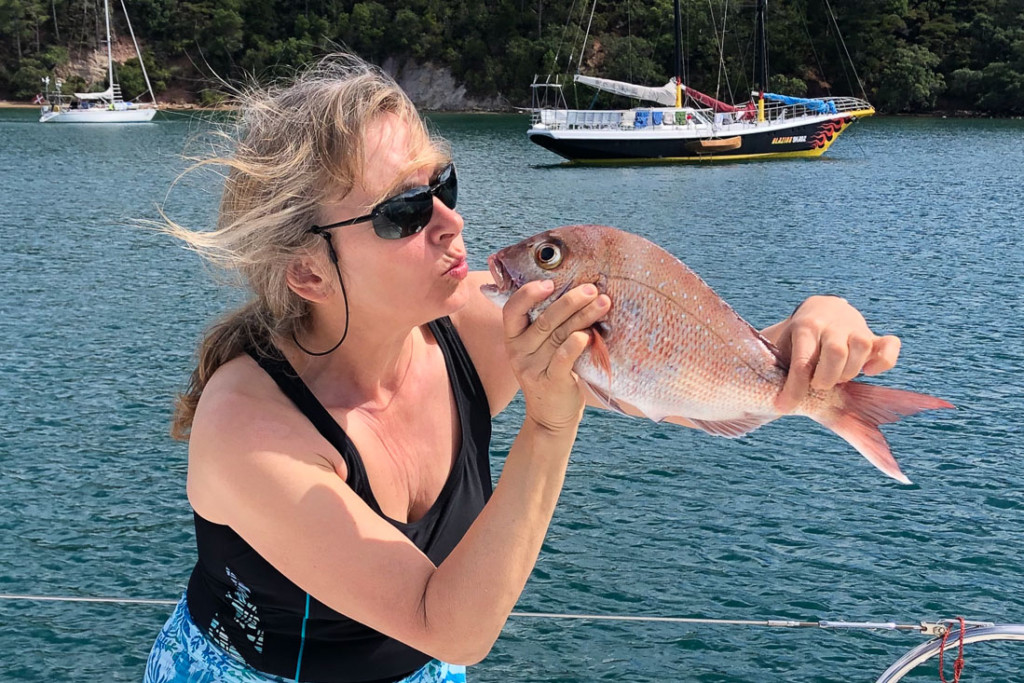
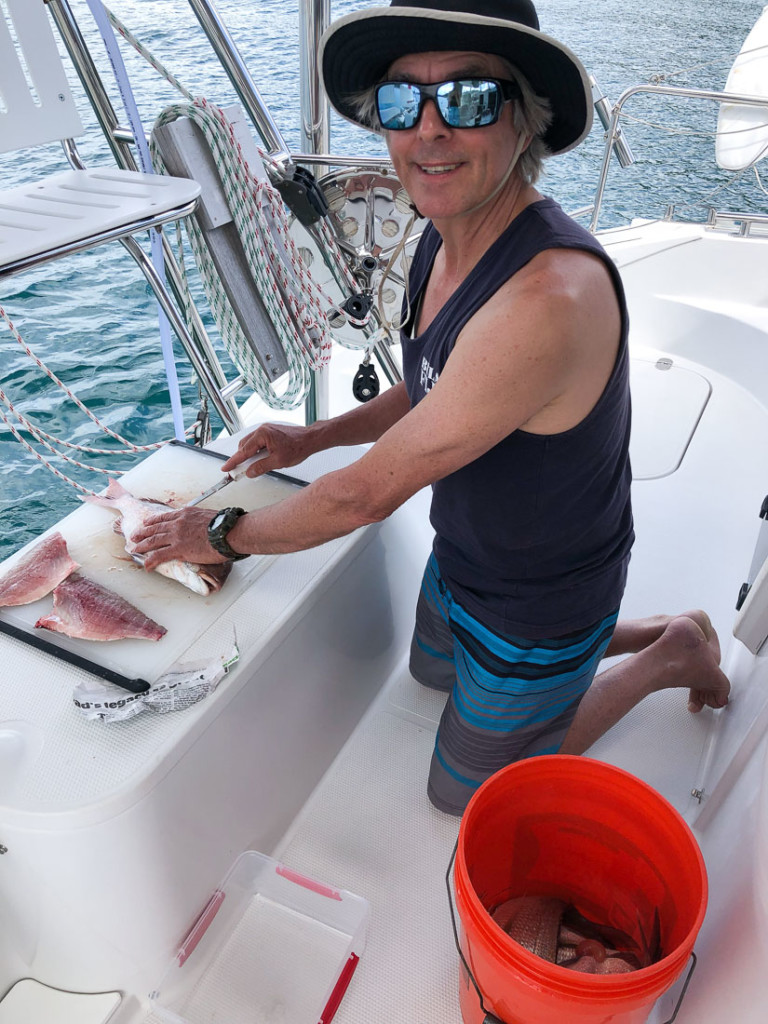
Cruising friend, Keli (S/Y Marilyn), told us on Messenger to watch out for good friends on S/Y Caramba. They were from Tauranga and cruising around Great Barrier. We saw their boat and we made brief contact. Billy and Teresa couldn’t have been nicer.
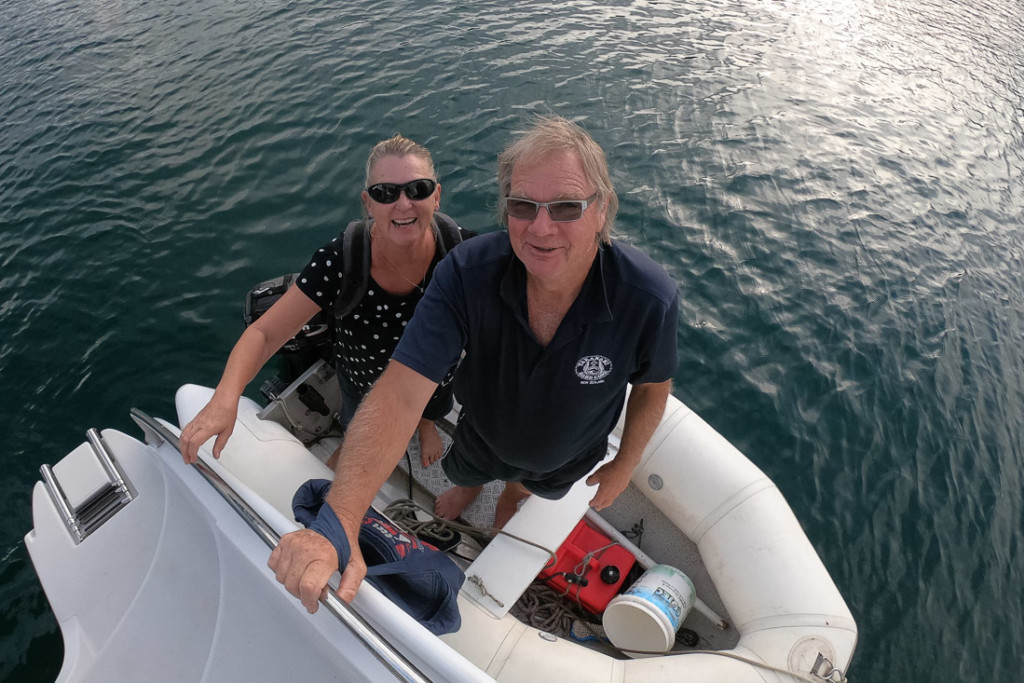
Billy showed us where and how to harvest oysters, only a local would know! In just a few minutes, they had collected enough for a good meal. The real work took place back on the boat!
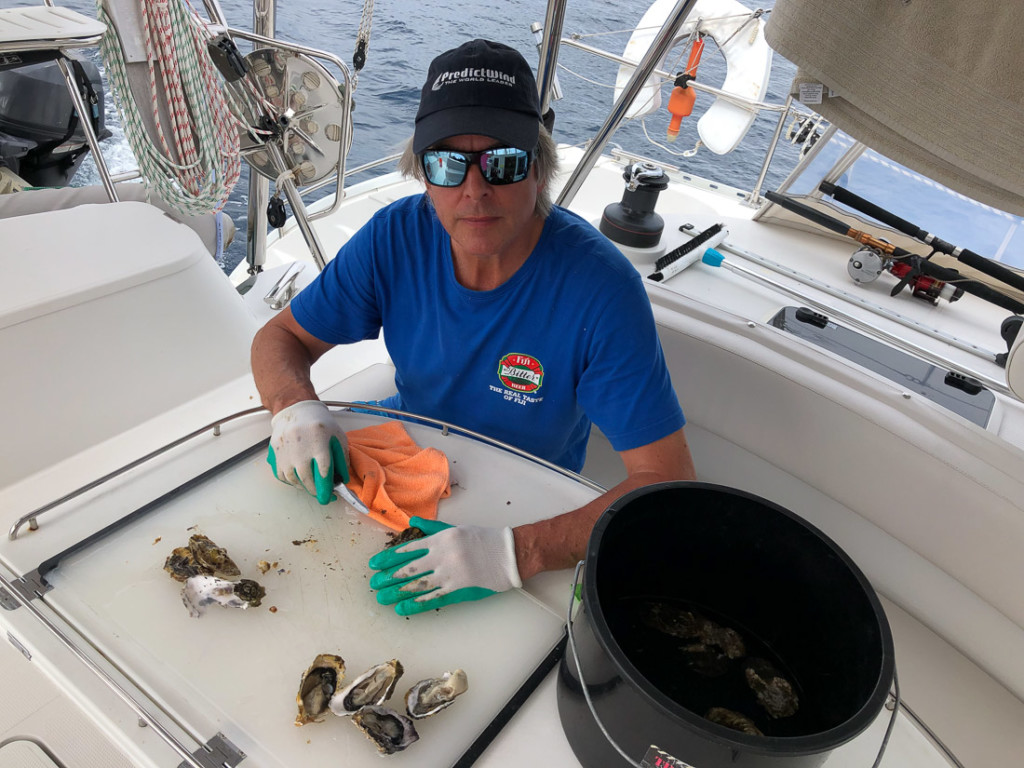

If it weren’t for haul out date in Whangarei, we would have stayed much longer at Great Barrier. Next time we will stay a few weeks, sample the different anchorages, rent a car and drive around the island, do some hiking and bring a Vodaphone Sim Card! Safe anchorages, long sandy beaches on the western side, fantastic hiking and great fishing! What else could a yachtie want?




7 comments
Great photos and great trip!! Off to Tahiti Morea and Raiatea on Saturday May 4 with Jen. Guess we will miss you. I remember Monty saying this was trying to get there. Cheers!!!
Great update & pics. I am off to Raiatea sailing a Sunsail 444 catamaran for two weeks starting May 4th around the Society Islands including Bora Bora, Tahaa. As well the Tahiti International Pearl Regatta starts on May 7th for 5 days we may join in on some of the fun socials. I managed 56 days skiing, including 2 weeks in France & 2 week sailing trip in the BVIs in Feb. I am chartering a Sunsail 454 cat on June 8th in the BVIs for two weeks, then back to Gibsons for the summer.
Enjoy your charter in Tahiti! You certainly are a busy guy!
Great blog Margy and awesome photos! Schoolhouse bay is actually Smokehouse bay but it’s all good. Hopefully you’re all ready for your next island adventure on Whistler ⛵?
Thanks, fixed that! Hope to see you again soon!
wow… Just got caught up on your blog. What a great tour of NZ..
Ritchie off to ski this am. Day 98.. He’s been slacking off lately..
J &R
Oh, those views and that bounty. Can’t wait to sail back there. Where will you head this season?